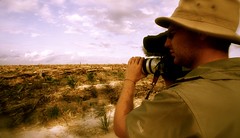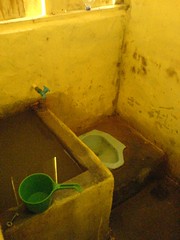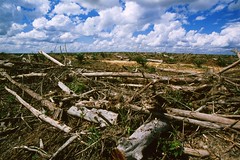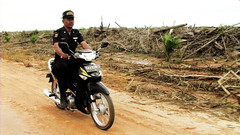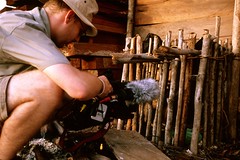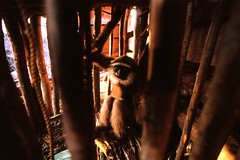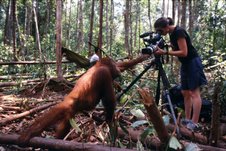Palm Oil threatens 1600 Orangutans
Minister warns company for posing threat to 1,600 orangutans
Palangka Raya, Central Kalimantan (ANTARA News) - Forestry Minister MS Kaban has strongly warned the Makin Business Group for planning to open an oil palm plantation in an area which hosts the habitat for about 1,600 orangutans in Katingan district, Central Kalimantan.
"We have given the company a warning and asked it to save the life of orangutans in the area," Minister Kaban said here Tuesday night.
Kaban made the remarks during a meeting between Vice President Jusuf Kalla and Central Kalimantan`s regional government officials, mining, plantation and forestry businesses.
The minister said if not seriously reprimanded Makin Group`s plan could lead to the [loss] of thousands of orangutans in the area.
Therefore, he called on the business group to save first the rare animals in the area which was to be turned into a plantation.
"I think Indonesia has been under a heavy spotlight for incompetence in preserving its biodiversity," the minister said.
Makin Group is planning to open a 50 thousand hectare oil palm plantation in Katingan district, Central Kalimantan, in 2007.
In the area, there is a habitat for orangutans with a population of 1,600.
In the meantime, Assistant Manager of the Borneo Orangutan Survival (BOS), Hardi Baktiantoro, said the opening of the plantation in Katingan district was a serious threat to 1,600 orangutans in Kalimantan.
"Based on our data, the area, where Makin Group is to open an oil palm plantation, is host to some 1,500-1,600 orangutans. If the company resumes its planning, it will exterminate the rare animals," he [said].
He predicted the population of the Kalimantan orangutan would have been extinct by 2010 in line with the opening up of forests to make way for palm oil plantations.
"The biggest threat to orangutans is the expansion of oil palm plantations," he said. (*)
Palangka Raya, Central Kalimantan (ANTARA News) - Forestry Minister MS Kaban has strongly warned the Makin Business Group for planning to open an oil palm plantation in an area which hosts the habitat for about 1,600 orangutans in Katingan district, Central Kalimantan.
"We have given the company a warning and asked it to save the life of orangutans in the area," Minister Kaban said here Tuesday night.
Kaban made the remarks during a meeting between Vice President Jusuf Kalla and Central Kalimantan`s regional government officials, mining, plantation and forestry businesses.
The minister said if not seriously reprimanded Makin Group`s plan could lead to the [loss] of thousands of orangutans in the area.
Therefore, he called on the business group to save first the rare animals in the area which was to be turned into a plantation.
"I think Indonesia has been under a heavy spotlight for incompetence in preserving its biodiversity," the minister said.
Makin Group is planning to open a 50 thousand hectare oil palm plantation in Katingan district, Central Kalimantan, in 2007.
In the area, there is a habitat for orangutans with a population of 1,600.
In the meantime, Assistant Manager of the Borneo Orangutan Survival (BOS), Hardi Baktiantoro, said the opening of the plantation in Katingan district was a serious threat to 1,600 orangutans in Kalimantan.
"Based on our data, the area, where Makin Group is to open an oil palm plantation, is host to some 1,500-1,600 orangutans. If the company resumes its planning, it will exterminate the rare animals," he [said].
He predicted the population of the Kalimantan orangutan would have been extinct by 2010 in line with the opening up of forests to make way for palm oil plantations.
"The biggest threat to orangutans is the expansion of oil palm plantations," he said. (*)
Copyright © 2006 ANTARA
